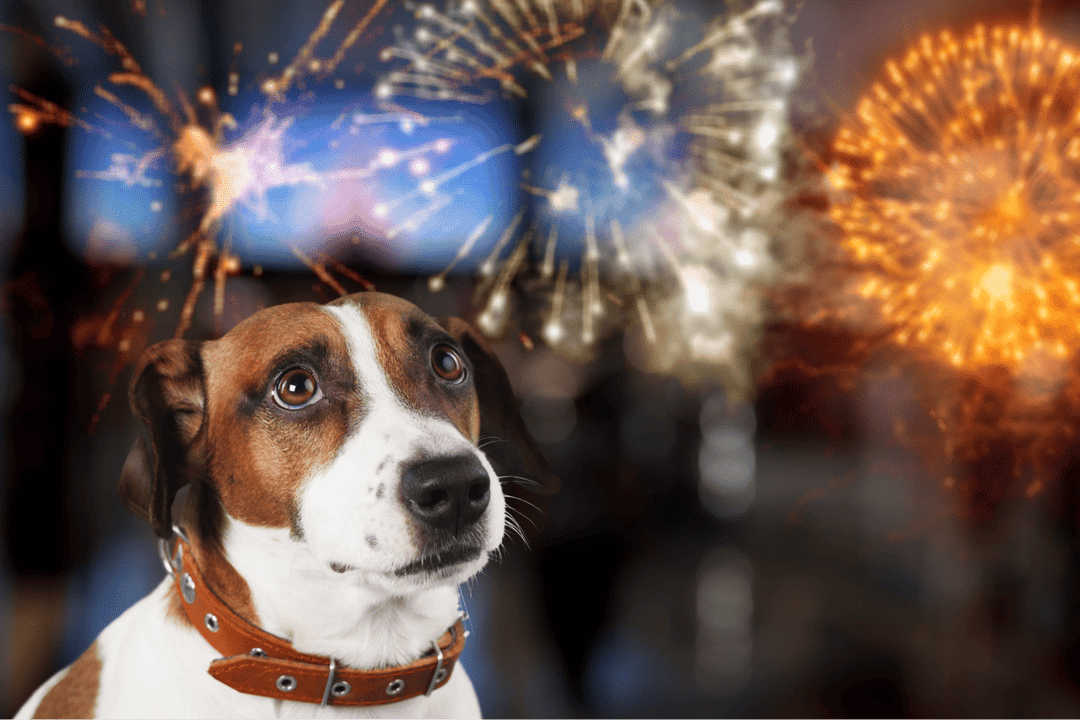
Training
Top Strategies for Managing Your Dog’s Fear of Loud Noises
• 4 min read
Dogs are often sensitive to loud noises, which can trigger fear and anxiety that negatively impacts their well-being. Whether it's thunderstorms, fireworks, or household appliances, sudden or loud sounds can provoke intense reactions in many dogs.
Understanding why dogs fear loud noises and implementing effective strategies to manage this fear is crucial for their mental and physical health.
Understanding Noise-Related Anxiety in Dogs
Common Triggers of Noise Anxiety
Noise-related anxiety in dogs can be triggered by various sounds, including:
⚡️ Thunderstorms: The combination of thunder, lightning, and atmospheric pressure changes can be particularly frightening for dogs.
🎇 Fireworks: The unpredictable loud bangs and flashing lights are a common source of fear.
🔋 Household Noises: Vacuum cleaners, blenders, and other noisy appliances can also be disturbing.
🚨 Sirens and Traffic Sounds: City-dwelling dogs are often exposed to sirens, horns, and other city sounds that can provoke fear.
Signs and Symptoms of Fearful Behavior
Recognizing the signs of noise anxiety can help you address your dog's fears promptly:
Physical Symptoms: Panting, drooling, trembling, and pacing are common physical indicators.
Behavioral Changes: Your dog may bark excessively, hide, or attempt to escape.
Destructive Behavior: In extreme cases, dogs may scratch doors or chew furniture in an attempt to flee from the noise.
Changes in Appetite or Sleep: Noise anxiety can also cause a decrease in appetite or disturb sleep patterns.
Immediate Strategies to Calm Anxious Dogs
Creating a Safe Space
A designated safe space can provide comfort during anxiety episodes:
Crate or Den: A crate or small, enclosed area can offer a sense of security.
Dark and Quiet: Create a quiet, dim environment to reduce stimulation.
Familiar Scents: Add blankets or clothing with your scent to increase comfort.
Using White Noise and Calming Music
Background sounds can help mask loud noises and create a calming environment:
White Noise: Machines that produce white noise can help drown out sudden, startling sounds.
Calming Music: Gentle music, such as classical, can soothe anxious dogs.
Long-Term Training Techniques
Gradual Desensitization to Loud Noises
Gradual desensitization is a technique where your dog is slowly exposed to the sounds that trigger anxiety, starting at very low levels:
Recorded Sounds: Use recordings of triggering sounds at a very low volume.
Incremental Increases: Gradually increase the volume as your dog becomes more comfortable.
Frequent Practice: Regular exposure in a controlled setting helps reduce sensitivity.
Counterconditioning with Positive Reinforcement
Counterconditioning helps change your dog's emotional response to noise triggers:
Positive Associations: Pair the triggering sound with positive experiences like treats or playtime.
Consistent Training: Practice regularly to reinforce the positive associations.
Behavioral Modification Methods
Utilizing Behavior Therapy
Behavior therapy focuses on changing your dog's emotional response to triggers:
Behavioral Modification Plans: Customized plans that address specific triggers and behaviors.
Gradual Exposure: Exposure therapy, often guided by a professional, helps your dog gradually adjust to noises.
Professional Training Assistance
Professional trainers or animal behaviorists can provide expert guidance:
Behavioral Assessments: Trainers can identify specific triggers and tailor training programs.
Customized Plans: Professional guidance helps develop effective training and management plans.
Tools and Products to Help Manage Noise Fear
Calming Supplements and Pheromone Diffusers
Supplements and pheromone diffusers can help reduce anxiety in dogs:
Calming Supplements: Products containing natural ingredients like chamomile or L-theanine.
Pheromone Diffusers: Devices that release synthetic calming pheromones to create a relaxing atmosphere.
Anxiety Wraps and Noise-Canceling Devices
Products that provide comfort and reduce the impact of noise:
Anxiety Wraps: Tight-fitting garments that apply gentle pressure to calm anxious dogs.
Noise-Canceling Devices: Ear covers or muffs designed to reduce noise exposure.
Preventive Measures for Future Anxiety Episodes
Early Socialization and Exposure
Early socialization can prevent noise phobia from developing:
Puppy Training Classes: Classes provide controlled exposure to various stimuli.
Positive Experiences: Introduce your puppy to different environments and sounds in a positive way.
Consistent Training and Routine Maintenance
Maintaining a consistent routine can help reduce anxiety:
Daily Routines: Consistent feeding, exercise, and play schedules.
Ongoing Training: Regular training sessions to reinforce positive behavior.
Conclusion
Managing your dog’s fear of loud noises requires patience, consistency, and an understanding of your pet's specific triggers. By combining immediate strategies, long-term training, and professional support, you can help your dog overcome noise-related anxiety. Remember to celebrate small victories and maintain a positive attitude to encourage progress.
MMDC Team
Healthy Pet, Happy Pawrents 💛